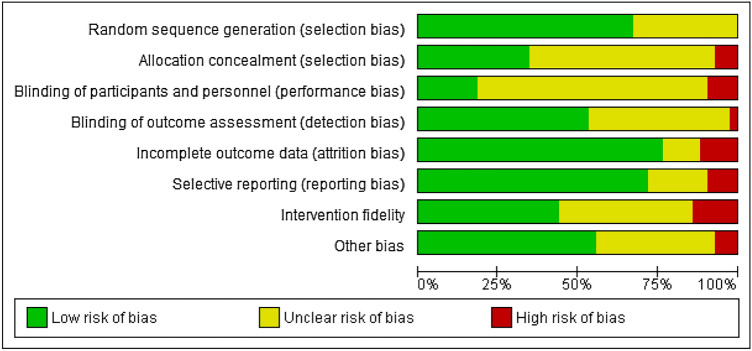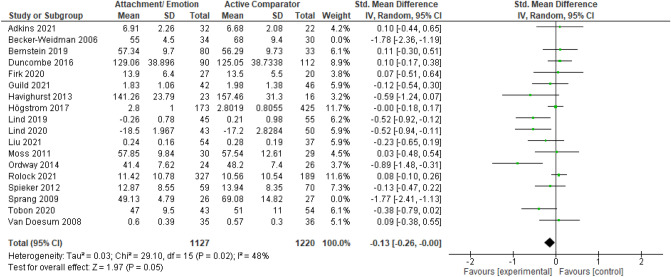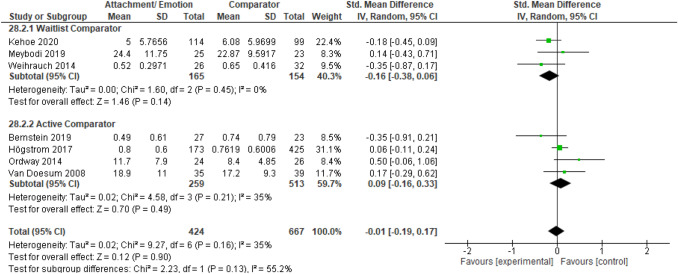Correction to: Clin Child Fam Psychol Rev (2022) 10.1007/s10567-022-00401-8
After publication of the original article, it came to the authors’ attention that there were errors in the caption of Figs. 2, 3, 4, 5, 6, 7, 8, 9 (i.e., 6 figures in total). The corrected captions can be found in the figures below.
Fig. 2.
Risk of bias across studies. Note. Other bias refers to the bias within a study that did not appropriately fit in with one of the other categories. Typically, this referred to studies reporting limited information about participants
Fig. 3.
Forest plot of attachment- and emotion-focused parenting interventions versus waitlist controls on externalizing behavior. Note. A negative SMD (left of forest plot) refers to favoring the intervention condition, whereas a positive SMD (right of forest plot) refers to favoring the control condition
Fig. 4.
Forest plot of attachment- and emotion-focused parenting interventions versus waitlist controls on internalizing behavior. Note. A negative SMD (left of forest plot) refers to favoring the intervention condition, whereas a positive SMD (right of forest plot) refers to favoring the control condition
Fig. 5.
Funnel plots for externalizing and internalizing outcomes when attachment- and emotion-focused parenting interventions are compared to waitlist controls. Note. Left funnel plot shows studies with externalizing outcomes and the right funnel plot shows studies with internalizing outcomes
Fig. 6.
Forest plot of attachment- and emotion-focused parenting interventions versus active comparators on externalizing behavior. Note. A negative SMD (left of forest plot) favors the attachment- and emotion-focused parenting intervention condition, whereas a positive SMD (right of forest plot) favors the active comparator condition. Two outliers were removed (Becker-Weidman et al., 2006; Sprang, 2009). When these outliers were included, SMD = − 0.30, 95% CI [ − 0.51, − 0.10], I2 = 80%
Fig. 7.
Forest plot of attachment- and emotion-focused parenting interventions versus active comparator on internalizing behavior. Note. A negative SMD (left of forest plot) favors the attachment- and emotion-focused intervention condition, whereas, a positive SMD (right of forest plot) favors the active comparator condition. Sprang (2009) was removed from analyses as an outlier. When included, SMD = -0.17, 95%CI [-0.36, 0.02], I2 = 60%
Fig. 8.
Funnel plots for externalizing and internalizing outcomes when attachment- and emotion-focused parenting interventions are compared to active comparator. Note. Left funnel plot shows studies with externalizing outcomes and the right funnel plot shows studies with internalizing outcomes
Fig. 9.
Forest plot of attachment- and emotion-focused parenting interventions versus waitlist and active comparators on parent mental health outcomes Note. A negative SMD (left of forest plot) favors the attachment- and emotion-focused intervention condition, whereas, a positive SMD (right of forest plot) favors the comparator condition
The original article has been corrected.
Footnotes
Publisher's Note
Springer Nature remains neutral with regard to jurisdictional claims in published maps and institutional affiliations.










